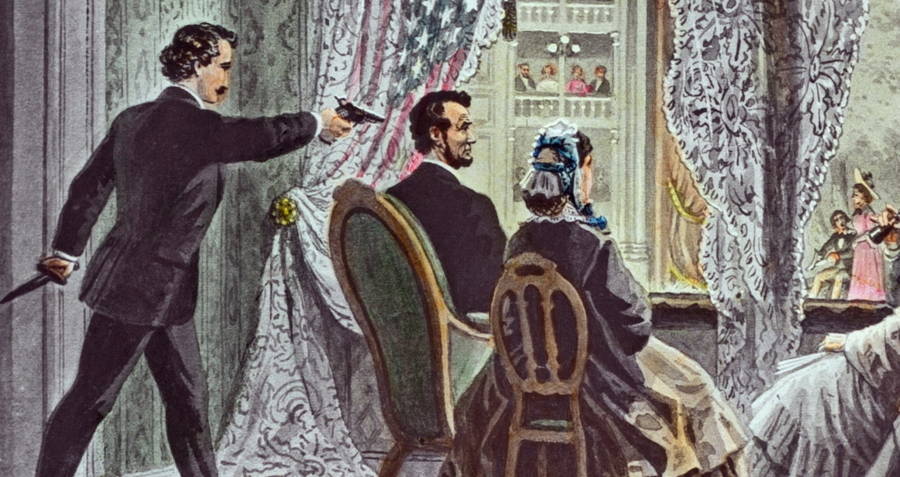
In popular lore, John Wilkes Booth, the assassin of Abraham Lincoln, was the first lone deranged gunman—preceding Lee Harvey Oswald.
A stage actor from a famous theatrical family from Maryland and Confederate sympathizer who was as “handsome as a Greek God,”[1] Booth shot Lincoln in the back of the head while Lincoln and his wife, Mary Todd Lincoln, were watching the play “Our American Cousin” at Ford’s Theatre on April 14, 1865, a few nights after the surrender of Confederate General Robert E. Lee.
After shooting Lincoln, Booth jumped to the stage, breaking his leg, while proclaiming “sic semper tyrannis” (“thus always to tyrants”). He stabbed orchestra leader William Withers, Jr., before escaping the theater through a side door to a waiting carriage. Booth then escaped the city, eventually winding his way to a farmhouse in Northern Virginia where he was tracked down and supposedly killed 12 days later.

Booth, who was 26 at the time, allegedly conceived of his plot to kill Lincoln after he heard Lincoln give a speech expressing support for Black suffrage in the waning days of the Civil War. Allegedly, Booth said of Lincoln’s speech: “That means n*gger citizenship. Now, by God, I’ll put him through.”

This story told to schoolchildren for generations, like so many other fables about the American past, is simply not true.
Booth, like Oswald, was not a deranged lone assassin who conceived of the plot in reaction to a particular speech. Rather, Booth appears to have acted as part of a much wider conspiracy involving Lincoln’s Secretary of War, Edwin Stanton, eight other co-conspirators, and more than 70 government officials and businessmen, some of them connected to the Confederate secret service whom Booth was in contact with when he traveled before the assassination to Montreal, Canada (Montreal was a headquarters of the Confederate spy service and British secret service).


On the night of the assassination, Stanton rebuffed Lincoln’s request to have the former’s chief aide, Thomas T. Eckert, work as his bodyguard at Ford’s Theatre. Instead, Lincoln was protected by John F. Parker of the Metropolitan Police, who had been reprimanded for drinking on the job and other misconduct, and was never punished for failing in his duties.[2]
When Booth’s diary was recovered by Stanton’s troops, it was delivered to Stanton, who ripped out 18 pages that were not made available to later investigators. These pages were allegedly later found in the attic of one of Stanton’s descendants, Joseph Lynch, though nobody has actually seen them.[3]
In a 1937 book, Otto Eisenschiml presents Stanton, a former lawyer from Steubenville, Ohio, as a man of “Machiavellian finesse,” who deliberately prolonged the Civil War and may have plotted Lincoln’s downfall to gain more personal power.
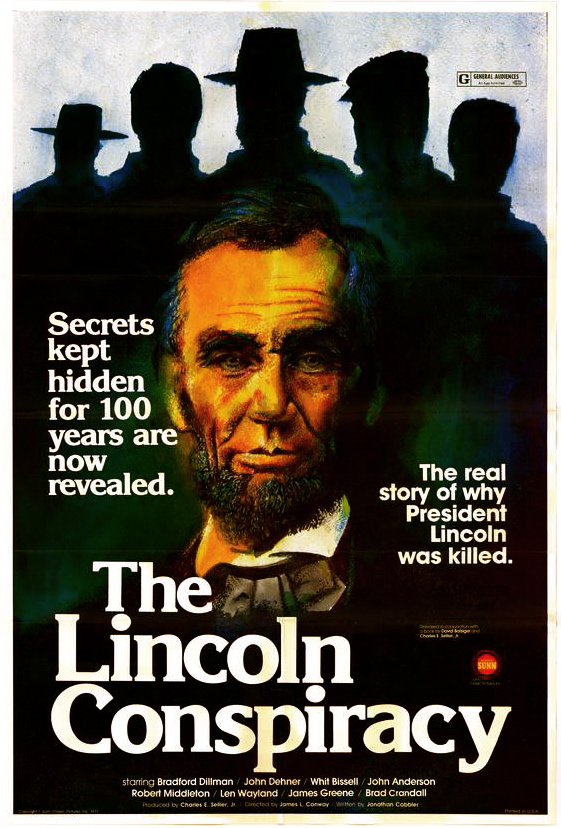
David Balsiger and Charles Sellier, Jr., wrote in The Lincoln Conspiracy that, “under the Radical Republicans Plan for Reconstruction that Stanton supported but Lincoln did not, the War Department and the Secretary of War would be vital in military occupation of the conquered states. Military governors and districts, all under Stanton [who was Secretary of War] would make him the most powerful man in the land. Finally, Stanton could advance his own plans for becoming President through the power and publicity he would receive as the nation’s most influential man.”[4]
After Andrew Johnson became President, Stanton tried to orchestrate Johnson’s impeachment, though the Senate rejected the impeachment by one vote—35 for and 18 against—thus, failing to gain the two-thirds majority required by Article 2 of the U.S. Constitution.[5] Stanton’s scheming consequently was for naught and he never became president.


Some writers suggest that Stanton and Booth were bankrolled by a cabal of international bankers led by the Rothschild’s who wanted Lincoln removed because of his opposition to a Central Bank.[6]
During the Civil War, Lincoln had refused to borrow money from international bankers—who had helped provoke the war by bankrolling white supremacist groups in the South—and instead found support from Russia and created “greenbacks” (named for their ink color) which were printed by the U.S. Treasury.
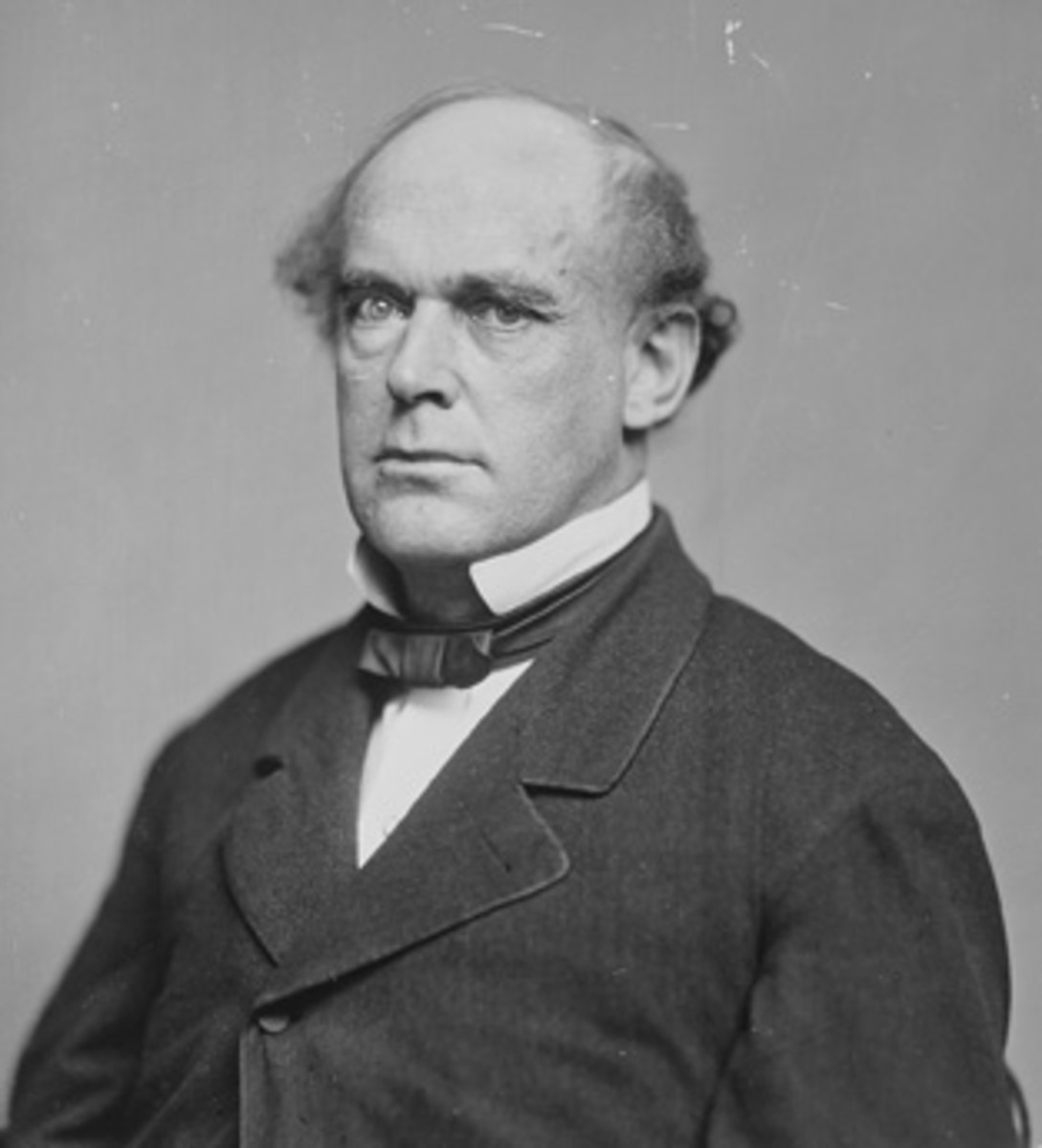
In 1863, Treasury Secretary Salmon P. Chase pushed a bill through Congress creating a central bank. The National Bank Act created a federally chartered bank that had the power to issue U.S. Bank notes backed by debt that were loaned to the government at interest.
Lincoln fought against the central bank and, by 1865, was beginning to make inroads into its demise.[7]
Too Many Coincidences
During the trial of some of Booth’s alleged co-conspirators, Samuel Chester, a friend of Booth’s, said that Booth had told him “there were from fifty to one hundred persons engaged in the conspiracy.”[8]

Booth’s mission required information that could only have come from the highest sources in Washington. Lincoln’s attendance at Ford’s Theatre on the fateful night had not been publicly announced.
Without insider informants, Booth also could not have known that Lincoln had a substitute bodyguard that night, John F. Parker, who would not be at his post at the key moment.[9]
Commanding Union General Ulysses S. Grant, who was supposed to watch the play with Lincoln that night, was called away from Ford’s Theatre by Stanton so that the plot could be consummated.[10]
Booth and a co-conspirator, drug clerk David Herold, had been detained on the afternoon of the assassination on the road into Washington from the east, but were released on the order of General Christopher C. Augur who reported to Stanton.[11]

Stanton impeded the search for Booth after the assassination by releasing his name to the newspapers only at 1:30 a.m., even though he knew Booth’s identity many hours earlier.[12]
General Augur also did not pursue Booth on the road to Port Tobacco, Maryland, which it was almost certain that he was taking, and called back a Major (James R. O’Beirne) who was on his pursuit. Stanton further prevented any investigation into the interruption of all telegraphic communication between Washington and the outside world for two hours after Lincoln’s assassination when the telegraphic wires were cut.[13]

Soldiers searching for Booth after his escape said that they were harassed by private detectives who tried to throw them off the trail. Colonel Lafayette C. Baker, who ran the National Detective Bureau, said that he regarded Booth, Herold and others as “mere tools in the hands of more skilled conspirators.”[14]
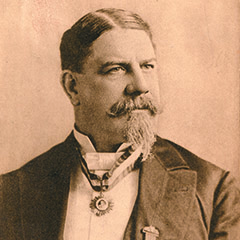

While Booth was in the process of killing Lincoln, Lewis Powell (aka Lewis Paine), an Alabaman wounded at Gettysburg, broke into Secretary of State William Seward’s house and left him and four others bleeding from their wounds.


A plot to kill Vice President Andrew Johnson by George Atzerodt never went forward, breeding suspicion that Johnson, the main beneficiary of Lincoln’s assassination, was in on it.[15]


Before the assassination, Booth allegedly walked into the lobby of the Kirkwood House, the hotel where Johnson was staying, and asked for him, leaving him a note that said: “Don’t wish to disturb you. Are you at home?”[16]

Johnson behaved strangely after the assassination, visiting Lincoln on his deathbed only for a few minutes (whereas the other Cabinet members stayed for much longer) while being found in a drunken stupor just before his inauguration.[17]

During his last months as President, Johnson issued a pardon to Dr. Samuel Mudd, an ardent pro-Confederate who helped Booth hide out after Lincoln’s assassination, treating his broken leg and withholding information from Union soldiers trying to track down Booth.[18]

Mary Todd Lincoln, the slain president’s widow, was among those to suspect Johnson, writing in a letter: “…that miserable inebriate Johnson….He never wrote me a line of condolence and behaved in the most brutal way…As sure as you and I live, Johnson had some hand in all this.”[19]
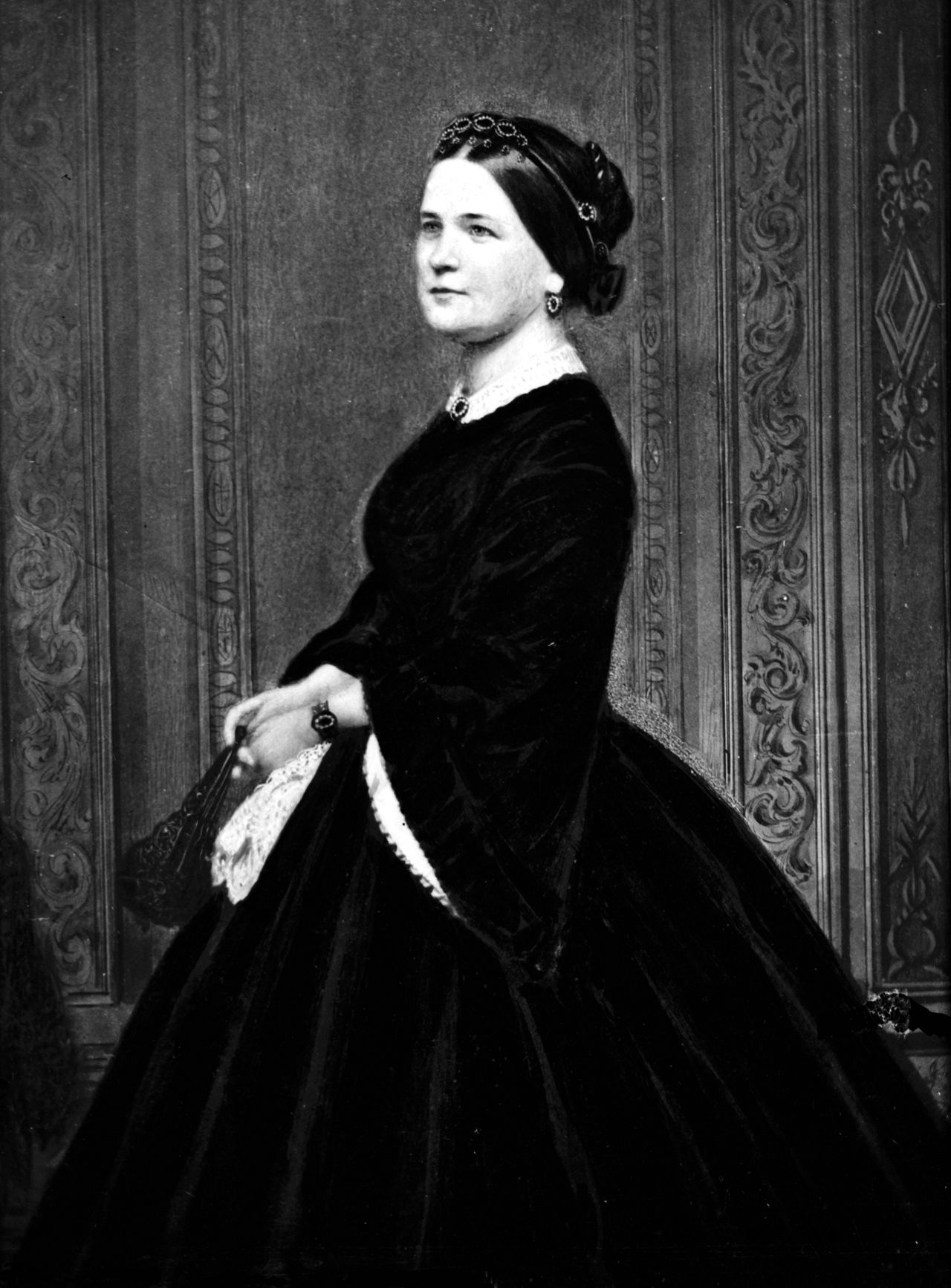
Phony Death
Booth was allegedly killed by an overly zealous Union soldier named Boston Corbett on April 26 at a farm in Virginia, owned by Richard Garrett, where he was hiding out.[20]


David Balsiger and Charles E. Sellier, Jr., however, in their 1977 book The Lincoln Conspiracy, claimed that the person killed was not Booth but James William Boyd, a former Captain in the Tennessee Volunteers of the Confederate Army and Rebel Secret Service who had been released from prison by Stanton in February 1865.[21]

One reason people thought that Boyd was Booth was that he had Booth’s letters with him and a picture of Booth, which he had retrieved after Booth had left them by the roadside when he had to escape into the woods because he thought he would be imminently captured.[22]

Dr. John Frederick May, who had removed a fibroid tumor from Booth’s neck two years before the assassination and performed the autopsy, said in a statement that was kept secret for 70 years that there was no resemblance to the corpse alleged to be Booth with the real Booth. Among other anomalies was the fact that the dead man was freckled, when Booth was not.[23]
Basil Moxley, a pallbearer at Booth’s funeral, said years after Lincoln’s death that the body buried in Green Mount Cemetery, Baltimore, was not that of Booth; that man’s hair was lighter than Booth’s and his appearance was different.[24]
Senator Charles Sumner (D-MA) had said that the reward for Booth’s capture should not be paid out because there was not enough evidence to verify that it was Booth who had been killed. Whig Senator Garrett Davis of Kentucky complained that he had never seen any satisfactory evidence that Booth had been killed.
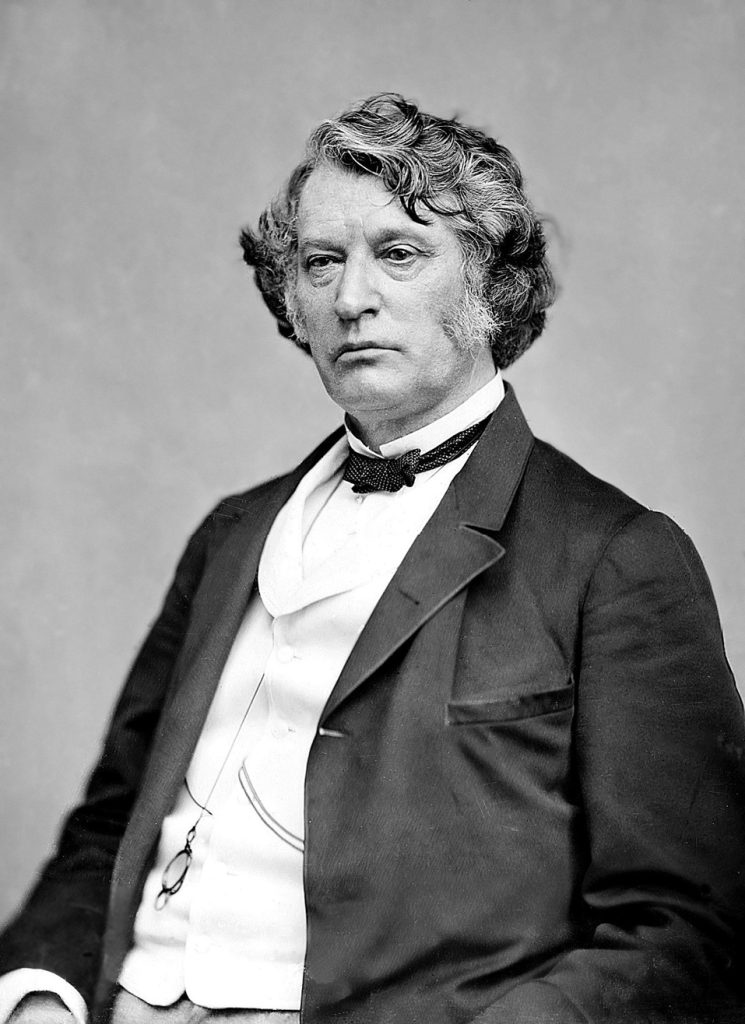

In the early 1900s, John Shumaker, General Counsel to the Department of the Army wrote “the evidence put forth by the government to support the conclusion that it was the body of John Wilkes Booth was so insubstantial that it would not stand up in a court of law.”
Nate Orlowek, a renowned Lincoln assassination expert, told historian Donald Jeffries: “I have devoted 42 years to researching the possible escape of John Wilkes Booth, and am convinced to a 90% degree of certainty that the man killed in the barn was not John Wilkes Booth. The findings of my team are so convincing that the Booth family has nearly unanimously come to the same conclusion.”[25]
Orlowek told Unsolved Mysteries that, had the government been confident that it was Booth who had been killed, it would have taken public photos; instead, Booth was secretly buried in the basement of the old Naval prison in Washington.
When David Herold came out of the Garrett barn after it was surrounded by police deputies, Herold had said that the man in the barn—who was subsequently killed—was not Booth, but that his name was Boyd. After he was taken into police custody, Herold changed his testimony and said it was Booth—though this testimony appears to have been coerced.
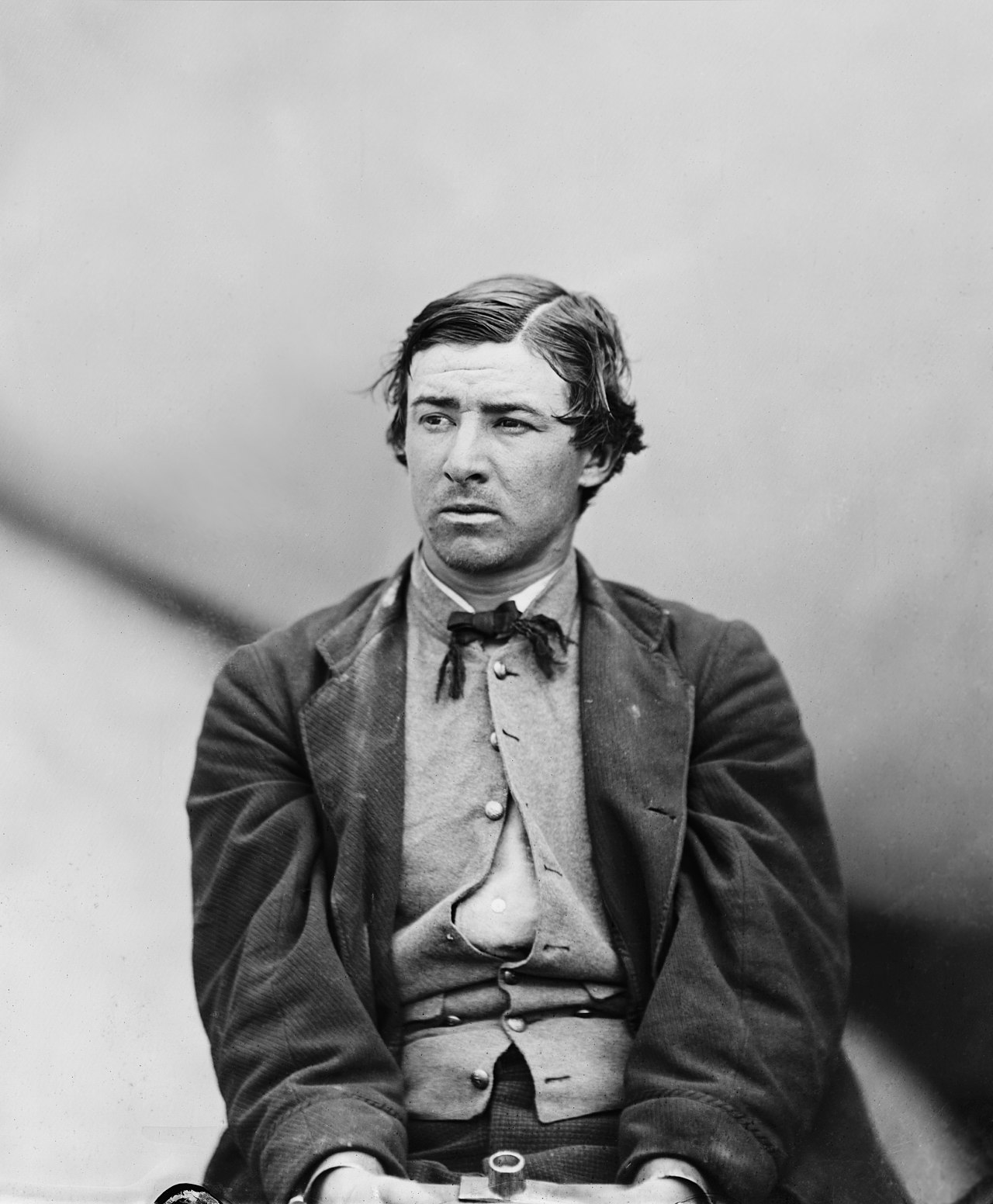
Lieutenant William C. Allen, a Secret Service agent, corroborated Herold’s original assessment when he pointed out that the man shot in the barn by Corbett could not have been Booth because he had red hair when Booth’s hair was jet black.
Two other Union soldiers who knew Booth from when they lived in New Orleans, Private Joseph Zisgen and Quartermaster Wilson D. Kenzie, said further that the dead man did not resemble Booth (the dead man had sandy hair, when Booth’s hair was very dark). In a sworn affidavit in 1922, Kenzie, then 77 years old, admitted that the officers had told him to keep what he knew secret.
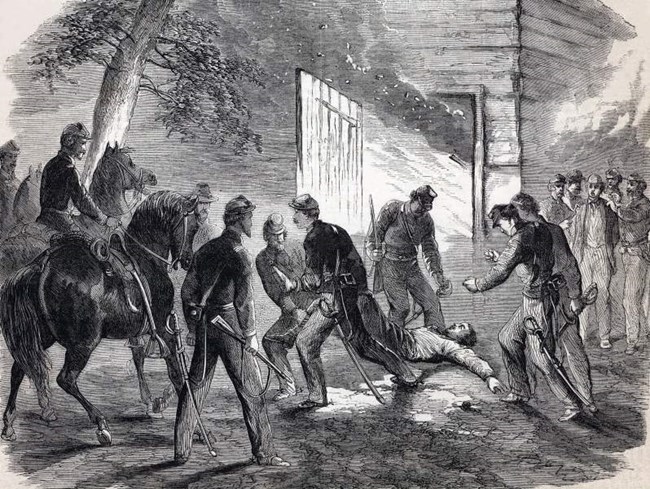
The Escape of John Wilkes Booth
In 1907, a Texas attorney named Finis L. Bates published the book The Escape and Suicide of John Wilkes Booth, which suggested that Booth had escaped and lived another 38 years after Lincoln’s death before committing suicide in Enid, Oklahoma.[26]

Bates learned this story from a client, John St. Helen of Granbury, Texas, a bartender who had been arrested for selling tobacco and whiskey without a license. St. Helen confessed to Bates on his sickbed in 1872 that he was Booth and that he had killed Lincoln so that a Southerner, Andrew Johnson, could ascend to the presidency and protect the South from misrule and the confiscation of its landed estates.
While we do not know for sure if John St. Helen was telling the truth, a comparison of photographs revealed that Booth and John St. Helen had a a striking resemblance. When in 1931, six Chicago physicians examined John St. Helen’s mummified body, they noticed a scarred right eyebrow, a crushed right thumb and a disfigured left leg that had been broken, all of which John Wilkes Booth had.

Booth (aka John St. Helen) had told Bates that, on the day before the assassination, he had met with Vice President Johnson, who wanted to strike a blow for the vanquished South. He called off a plan to kidnap Lincoln and asked Booth if he would “falter at the supreme moment,” or was “too faint hearted to kill Lincoln.” When Booth said that killing Lincoln would mean for him certain death, Johnson assured him that he would help arrange for his escape.[27]
After escaping from Ford’s Theatre, Booth said that he used a password, “T.B. Road,” to cross the Navy Yard Bridge on the East Potomac River that enabled him to leave Washington, D.C.[28] The guard at the bridge, Frederick A. Demond, later confirmed this story, writing to Bates in 1916 that he had been told to let a man through the roadblock if he used the password “T.B. Road.”[29]
Booth (aka St. John Helen) said that, after crossing the bridge, he met up with David Herold and they went to Dr. Mudd’s house where Mudd treated his broken leg.
When going through the open country in Virginia, Booth hid in an open wagon. When he feared that the police were on his trail, at one point, he fled into the woods, leaving behind his papers.
Later, after reaching the Garrett Farm, Booth sent James William Boyd to retrieve his papers. When the soldiers arrived and killed him, they assumed he was Booth because he had Booth’s papers on him. However, the real Booth (aka John St. Helen) said that he had been tipped off about the Union Army raid two hours before, and fled the Garrett Farm.

Subsequently, according to Bates’s account, he hid out in the forest and traveled by horse through the South, settling eventually in Granbury, Texas, after visiting with his brother and mother in California, living for a period in Indian Country among some Apaches.[30]
One of Booth’s girlfriends, Kate Scott signed a sworn affidavit that Booth was alive after the Garrett Farm shooting and that he visited her in Pennsylvania.[31]
Bates said that John St. Helen was a cultured man who, when he knew him, was trying to make money in a mining venture. He was easy to get along with, though kept inside him a dark secret which ought to have ate away at his soul.[32]

In 1866, St. Helen allegedly fathered a son with a half-Choctaw Indian woman whom he named John Wilkes Booth. His grandson, John Wilkes Booth III, told The Washington Post in 1985 that “my grandfather was born more than a year and a half after the Lincoln shooting, so, obviously, his father couldn’t have been shot in that burning barn. There were two people in there, and the soldiers just said that one was Booth.”[33]
Long Cover-Up
The War Department kept pertinent files on the Lincoln assassination marked “secret” until at least the 1930s. Secretary Stanton maintained that the suppressed material was “not in the public interest.”[34] Stanton’s War Department failed to prosecute some of the key people who had sheltered Booth and helped him in his flight afterwards.
Notable among these were Colonel Samuel Cox, on whose property Booth and Herold had hid for almost a week, and Thomas A. Jones, his half-brother, who had guided the assassins and furnished them a boat for their escape across the Potomac.[35]
The conspirators’ trial that took place was itself more of a show trial designed to ensure that the wider plot was never exposed.
The defendants (who included Lewis Powell, Mary Surratt, Dr. Samuel Mudd, George Atzerodt, Edman “Ned” Spangler, Michael O’Laughlen, and Samuel Arnold) were given inadequate time to prepare any defense and forced to sit in the court with their backs to the defending lawyers and were not permitted to turn their heads to them when under examination.[36]
The cover-up of Lincoln’s assassination has continued since that time, thanks to academic and popular historians who repeat the official story that Booth was the deranged lone assassin captured and killed at the Garrett Farm.


If the real truth were better known, it would more widely puncture the myth of American exceptionalism. Power-drives, coups, and political conspiracies are supposed to happen in foreign countries which the U.S. strives to help democratize. U.S. military and police authorities are supposed to always be efficient in capturing their targets.
But Booth was allegedly able to live 38 years after killing America’s most revered leader. His escape was orchestrated by the Secretary of War and Vice President who carried out a palace coup—just like another southern Vice President with the last name Johnson 98 years later.

-
Finis L. Bates, The Escape and Suicide of John Wilkes Booth (Memphis, TN: Pilcher Printing Co., 1907), 194. ↑
-
Otto Eisenschiml, Why Was Lincoln Murdered? (Boston: Little, Brown, 1937), ch. 3, ch. 5, and p. 396; David W. Balsiger and Charles E. Sellier, Jr., The Lincoln Conspiracy (Los Angeles, CA: Schick Sunn Classic Books, 1977), 67. Stanton was at the time responsible for guarding Lincoln. On Booth’s association with Confederate secret service agents, see William A. Tidwell, with James O. Hall and David Winfred Gaddy, Come Retribution: The Confederate Secret Service and the Assassination of Lincoln (Jackson: University of Mississippi Press, 1988).↑↑
-
Balsiger and Sellier, The Lincoln Conspiracy, 292. ↑
-
Balsiger and Sellier Jr., The Lincoln Conspiracy, 114. ↑
-
Eisenschiml, Why Was Lincoln Murdered? 396-420. Johnson was impeached for trying to remove Stanton. The impeachment was supported by Radical Republicans of the era with whom Stanton often allied. ↑
-
See eg. Craig Roberts, Kill Zone: A Sniper Looks at Dealy Plaza (Tulsa, Oklahoma: Conslidated Press International, 1997). ↑
-
Donald Jeffries, Crimes and Cover-Ups in American Politics, 1776-1963: The History They Didn’t Teach You in School, with foreword by Ron Paul (New York: Skyhorse, 2019), 140.
-
Jeffries, Crimes and Cover-Ups in American Politics, 1776-1963, 126. ↑
-
Jesse Ventura, with Dick Russell, American Conspiracies: Lies, Lies, and More Dirty Lies That the Government Tells Us (New York: Skyhorse Publishing, 2010), 4. ↑
-
Grant told Lincoln that he had to visit with his children in New Jersey but such a visit could easily have been delayed by a day. ↑
-
Bates, The Escape and Suicide of John Wilkes Booth, 86. See also Eisenschiml, Why Was Lincoln Murdered? ↑
-
Eisenschiml, Why Was Lincoln Murdered? 69. ↑
-
Eisenschiml, Why Was Lincoln Murdered? 80, 114, 131. Eisenschiml wrote that, “if the Maryland peninsula had been searched as thoroughly as it should have been, Booth and Herold could have never eluded their pursuers for such a length of time.” (p. 132). ↑
-
Bates, The Escape and Suicide of John Wilkes Booth, 138. ↑
-
Ventura, American Conspiracies, 5. Eisenschiml wrote in Why Was Lincoln Murdered? (p. 172) that, in 1890, a Lieutenant Mortimer B. Ruggles, one of three Confederates who assisted Booth to reach Garrett’s farm, came forward with a story published by The Century Magazine in which he said that Booth had told them, in his own account of the conspiracy, that deadly blows were to be struck at Lincoln and Seward. But there was no mention of Johnson; and Booth absolved Atzerodt of any intention to commit murder, saying that he knew nothing of the intended assassination. ↑
-
Jeffries, Crimes and Cover-Ups in American Politics, 135. ↑
-
Eisenschiml, Why Was Lincoln Murdered? 385. ↑
-
Ventura, American Conspiracies, 6; Tidwell, Come Retribution, 6. ↑
-
Jeffries, Crimes and Cover-Ups in American Politics, 134. ↑
-
Richard Garrett’s then twelve-year-old son Robert said years later that the man suspected of being Booth never made a motion to shoot before he was shot. This adds weight to the likelihood that there were orders by Stanton for Booth (or the man thought to be him as it turned out) not to be taken alive, because dead men don’t talk. In his 1937 book, Eisenschiml suggested that the man suspected of being Booth was shot from the side in the neck, and that he was not killed by Corbett but was either killed by Lt. Col. Everton Conger or committed suicide by shooting himself. ↑
-
Balsiger and Sellier, The Lincoln Conspiracy. ↑
-
Bates, The Escape and Suicide of John Wilkes Booth, 63. ↑
-
Jeffries, Crimes and Cover-Ups in American Politics, 1776-1963, 120. ↑
-
Bates, The Escape and Suicide of John Wilkes Booth, 178, 189, 190. Lt. David Dana had claimed the body of Booth in April 1865 but with the reservation that the body was much thinner and features much more pinched up than usual for Booth. ↑
-
Jeffries, Crimes and Cover-Ups in American Politics, 1776-1963, 139. ↑
-
Bates, The Escape and Suicide of John Wilkes Booth. ↑
-
Bates, The Escape and Suicide of John Wilkes Booth, 42, 43, 44. Johnson had aided Booth by making sure that Ulysses S. Grant and his wife did not attend the play with Lincoln. Johnson allegedly promised Booth that as President of the U.S., he would protect the people of the South from personal oppression and the confiscation of their remaining estates, believing that by killing President Lincoln he could practically bring victory to the Southern people out of defeat for the South. ↑
-
Bates, The Escape and Suicide of John Wilkes Booth, 47. ↑
-
Bates, The Escape and Suicide of John Wilkes Booth, 107. The story was also confirmed by General David D. Dana. ↑
-
Bates, The Escape and Suicide of John Wilkes Booth, 54-59, 129. ↑
-
Balsiger and Sellier, The Lincoln Conspiracy, 296. ↑
-
Going by the name David George, Booth allegedly ended his life in Enid, Oklahoma, in January 1903. Many in town felt that George had an uncanny resemblance to Booth. Author Finis L. Bates, from Memphis, Tennessee, arrived in Enid at the time and identified the body as his old friend John St. Helen. ↑
-
Frank Roberts, “Va. Man Says His Family History Tells Truth About Lincoln’s Killer,” The Washington Post, February 21, 1985, https://www.washingtonpost.com/archive/local/1985/02/21/va-man-says-his-family-history-tells-truth-about-lincolns-killer/6745ac4e-8632-4077-a711-5642c90161b5/. Booth III added that “[t]hey set the barn afire. There was no autopsy. They thought they would say he died there.” Some historians believe that Booth III was not actually Booth’s grandson, as the name John Wilkes Booth was somewhat commonplace because of Booth’s fame, and he was likely an imposter. ↑
-
Jeffries, Crimes and Cover-Ups in American Politics, 1776-1963, 140, 141. ↑
-
Eisenschiml, Why Was Lincoln Murdered? 136. Cox and Jones were arrested but released after a few weeks. Their names were subsequently kept under cover and hardly mentioned in public prints of the time. ↑
-
Eisenschiml, Why Was Lincoln Murdered? 236. “What rights do the accused persons enjoy?” a boy was asked by his teacher. “Death by hanging” was the rejoinder. ↑
CovertAction Magazine is made possible by subscriptions, orders and donations from readers like you.
Blow the Whistle on U.S. Imperialism
Click the whistle and donate
When you donate to CovertAction Magazine, you are supporting investigative journalism. Your contributions go directly to supporting the development, production, editing, and dissemination of the Magazine.
CovertAction Magazine does not receive corporate or government sponsorship. Yet, we hold a steadfast commitment to providing compensation for writers, editorial and technical support. Your support helps facilitate this compensation as well as increase the caliber of this work.
Please make a donation by clicking on the donate logo above and enter the amount and your credit or debit card information.
CovertAction Institute, Inc. (CAI) is a 501(c)(3) non-profit organization and your gift is tax-deductible for federal income purposes. CAI’s tax-exempt ID number is 87-2461683.
We sincerely thank you for your support.
Disclaimer: The contents of this article are the sole responsibility of the author(s). CovertAction Institute, Inc. (CAI), including its Board of Directors (BD), Editorial Board (EB), Advisory Board (AB), staff, volunteers and its projects (including CovertAction Magazine) are not responsible for any inaccurate or incorrect statement in this article. This article also does not necessarily represent the views the BD, the EB, the AB, staff, volunteers, or any members of its projects.
Differing viewpoints: CAM publishes articles with differing viewpoints in an effort to nurture vibrant debate and thoughtful critical analysis. Feel free to comment on the articles in the comment section and/or send your letters to the Editors, which we will publish in the Letters column.
Copyrighted Material: This web site may contain copyrighted material the use of which has not always been specifically authorized by the copyright owner. As a not-for-profit charitable organization incorporated in the State of New York, we are making such material available in an effort to advance the understanding of humanity’s problems and hopefully to help find solutions for those problems. We believe this constitutes a ‘fair use’ of any such copyrighted material as provided for in section 107 of the US Copyright Law. You can read more about ‘fair use’ and US Copyright Law at the Legal Information Institute of Cornell Law School.
Republishing: CovertAction Magazine (CAM) grants permission to cross-post CAM articles on not-for-profit community internet sites as long as the source is acknowledged together with a hyperlink to the original CovertAction Magazine article. Also, kindly let us know at info@CovertActionMagazine.com. For publication of CAM articles in print or other forms including commercial internet sites, contact: info@CovertActionMagazine.com.
By using this site, you agree to these terms above.
About the Author

Jeremy Kuzmarov holds a Ph.D. in American history from Brandeis University and has taught at numerous colleges across the United States. He is regularly sought out as an expert on U.S. history and politics for radio and TV programs and co-hosts a radio show on New York Public Radio and on Progressive Radio News Network called “Uncontrolled Opposition.”
He is Managing Editor of CovertAction Magazine and is the author of six books on U.S. foreign policy, including Obama’s Unending Wars (Clarity Press, 2019), The Russians Are Coming, Again, with John Marciano (Monthly Review Press, 2018), Warmonger. How Clinton’s Malign Foreign Policy Launched the U.S. Trajectory From Bush II to Biden (Clarity Press, 2023); and with Dan Kovalik, Syria: Anatomy of Regime Change (Baraka Books, 2025).
Besides these books, Kuzmarov has published hundreds of articles and contributed to numerous edited volumes, including one in the prestigious Oxford History of Counterinsurgency .
He can be reached at jkuzmarov2@gmail.com and found on substack here.



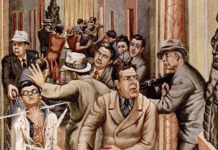


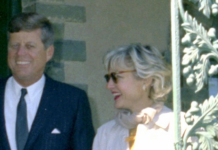




I was glad to see this in conclusion:
“His escape was orchestrated by the Secretary of War and Vice President who carried out a palace coup—just like another southern Vice President with the last name Johnson 98 years later.” But at the beginning of the article, it implies that Mr. Oswald was the actual killer of JFK, though dubbed a “lone-nut fanatic.” I reality, if one had read two vital books the immensely documented “JFK and the Unspeakable” by James Douglass and “Me and Lee” by Judyth Vary Baker, his mistress in the summer of 1963, the woman who knew him best of anyone, one would know that Oswald had nothing to do with the shooting,and in fact admired JFK and tried to prevent the impending assassination. He may have succeeded 3 week earlier in Chicago where a similar plot had evolved with another patsy in mind. Per Ms Baker, Lee had told her he was “on loan to the CIA from the FBI, where he was an informant.
Interestingly, the question of identity also comes up. Officer Tippet was also killed that day for no apparent reason, BUT he was known to have a striking resemblance to JFK! The rumors of a body switch between Dallas and Bethesda Maryland will not go away. Did you know that there was an Oswald double (doppelganger) In Dallas that fateful day? That person was evacuated on a military plane that afternoon, and may have been the one who shot Tippett. Douglass interviewed an army man who happened to be on that evacuation plane. And so much more.
In this article it states that John Wilkes Booth was not a deranged person. The opposite of deranged is sane, sound, balanced, reasonable, rational, clear or normal. Why would a sane, sound, balanced, reasonable, rational, clear and normal person take a gun and shoot the president. Does the fact that others may have been involved make his actions normal.
So, Lyndon Johnson may not be the only person to become president by killing his predecessor.
It seems strange to me that Nixon was absolutely adamant in 1968 that he did not want George H.W. Bush as his running mate despite a massive lobbying effort headed by Prescott Bush. The reason given was that he considered him a ‘lightweight’ but that would have advantages for a president. It would be unlikely that he would be overshadowed by him.
And so, I do wonder whether fear of assassination may have had something to do with it.
There are certainly some rather curious aspects to the 1981 assassination attempt on President Reagan that would have made Bush president if it had succeeded.
Astute observation about the ambitions of GHW Bush and the attempt on Reagan for obscure reasons.